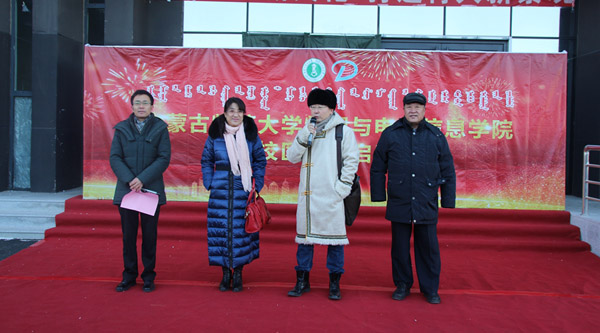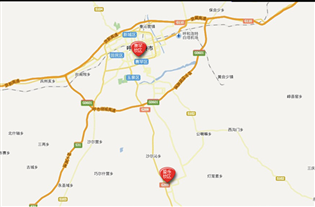School of Physics and Electronic Information

A ceremony is held to celebrate the relocation of the School of Physics and Electronic Information on Dec 18, 2017. [Photo/imnu.edu.cn]
The School of Physics and Electronic Information at Inner Mongolia Normal University (IMNU), formerly known as Department of Physics, was founded in 1952.
It has five departments, including Department of Physics, Department of Electronics, Department of Materials, Department of Practice and Innovation, and Lab Center. It has six majors for postgraduate students. And there are four majors for undergraduate students including physics, electronic information engineering, electronic information science and technology, and materials physics. Its major of physics was selected as a featured major in Inner Mongolia autonomous region and its discipline of materials physics and chemistry is the key discipline in the region.
The school has established an incubator for magnetic refrigerant materials and rare-earth permanent magnetic materials, with Baotou Rare-Earth Hi-Tech Zone aiming to promote the development and transformation of scientific research.
In cooperation with Baotou Research Institute of Rare Earths, it built a joint training center for postgraduate students. It has also formed profound partnerships in teaching and research with countries and organizations like Mongolia, Japan, Chinese Academy of Sciences and Polar Research Institute of China.
The school boasts good teaching and research conditions. It is equipped with more than 4,000 advanced machines valued at 40 million yuan ($6 million). It has ten laboratories including laboratory for fundamental physics, modern physics, fundamental microelectronic, electronic information and optical information processing. Among these laboratories, laboratories for fundamental physics, fundamental microelectronic, electronic information and computer science and technology are qualified laboratories in Inner Mongolia autonomous region. The laboratory for optical information processing is the key laboratory in IMNU. Its courses on physics, mechanics and method of mathematical physics are featured courses in the region.
It has an extensive literature reaching 16,000 books. There are more than 500 foreign books and 40 copies of newspapers.
The school has 23 projects, including 18 projects of the National Natural Science Foundation of China with the total fund reaching 4 million yuan ($603,190) during the 12th Five-Year Plan period (2011-15). It has published more than 300 papers, including 70 papers in core journals over the past five years. A total of 50 papers were included in Science Citation Index (SCI) and Engineering Index (EI).
It has established a high-end research team and an education system with local characteristics. It has 39 full-time teachers, 2 PhD supervisors, 8 professors, 19 associate professors, 23 instructors, and a chief expert.
To date, it has cultivated more than 8,000 talents in different fields including renowned experts, researchers and administrative officers, making a great contribution to development of education and economy in Inner Mongolia autonomous region.
Currently, there are more than 800 undergraduate students and 100 postgraduate students studying in the school.



 Print
Print Mail
Mail

